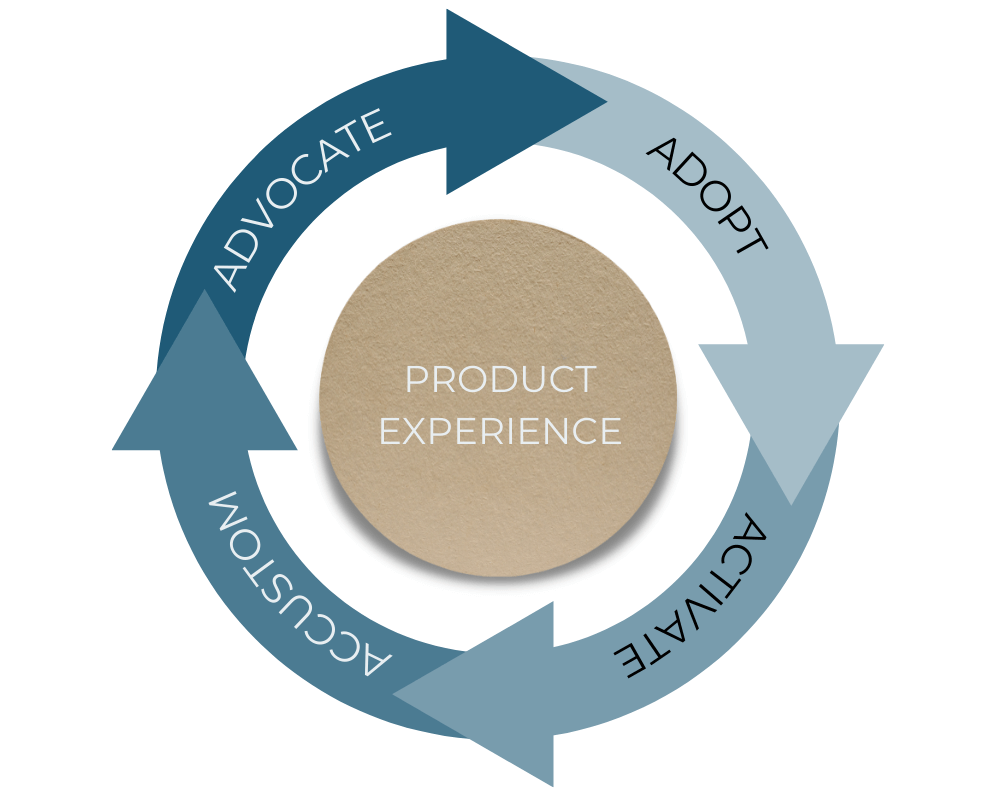Companies that die after the $10M mark don’t fail because the product became irrelevant or the team couldn’t get the job done.
They fail because they didn’t transform their business according to what the market dictates.
Failing to keep up with changing markets (Blockbuster being a famous example) will ultimately end in disaster.
While Blockbuster’s downfall may seem obvious to the Monday morning quarterbacks, transformation and go to market (GTM) strategy remains the biggest challenge—even for most promising companies.
Time and again we see businesses mistake ‘go-to-market’ for ‘how-we’re-going-hit-the-first-million.’
Then they proceed with fallacies like ‘Customers need our product,’ followed by ‘Customers don’t know how desperately they need us’ followed by ‘Customers are stupid for not realizing they need us.’
And this is why, sadly, less than 1% of companies have a chance of hitting 10 million in revenue.
In this post, we’ll discuss what GTM really is, who owns it, and the most important metrics to focus on.
Assumption #1: Marketing Owns GTM
Any company struggling with their GTM probably lacks a Revenue Operations (RevOps) function.
The reason is this: If you asked your CMO what they would do with a million dollar budget, they would hire additional marketers and initiate marketing initiatives. If you asked your sales leader the same question, they would say they would hire more SDRs and account executives.
Each team member is biased towards their area of expertise, preventing them from seeing the business holistically.
That bias doesn’t exist for RevOps because they don’t have allegiance to any one department. They’d objectively tell you which parts of the business can be improved to generate more revenue.
“[GTM] is about knowing what your next move should be–and your next, and your next, and so on.”
-Sangram Vajre, author of MOVE: The 4-question Go-to-Market Framework
Think of GTM as a process, not a destination.
GTM strategy isn’t one-and-done —it’s an iterative process that changes as your organization matures and expands. It continues to connect the company strategy to the values we promise to deliver to the customers.
Businesses, especially in 2023, can ensure their company’s survival by getting out of the mindset that GTM is just the launch of a new product, feature or website.
Instead of considering GTM as a one-time event, businesses need to embrace it as a habitual exercise that informs all critical business decisions.
Assumption #2: “We Need 5,000 MQLs Each Month. Period.”
As soon as leaders start a GTM strategy, they tend to fall victim to what I call “the frat boy mindset.” Leadership says, “Yeah! Let’s go after this billion dollar market, dude.” Chest bump. Chest bump.
There’s a big difference between a billion dollar market and a billion dollar market that you can actually serve. One of the most common mistakes I see in marketing is that people often look at the total addressable market instead of their total relevant market.
Total addressable marketing (TAM) versus total relevant market (TRM)
When building out the initial GTM strategy, companies often look at the total amount of money spent on a specific product or service category, and then try to figure out how much of that business they can get. Instead, they should be looking at how much of that money is being spent in their target customer segment.
For example, if you’re selling business software, trying to get $500 million worth of business from mom-and-pop restaurants doesn’t make sense. You should instead focus your efforts on finding businesses with more than $10 million in revenue because they’re the ones who are likely to buy your software.
Prioritize MRR (Monthly Recurring Revenue) and ARU (Average Revenue per User) over MQLs.
Most marketers are focused on MQLs versus building meaningful relationships with customers because they believe they can increase the size of their business simply by reeling in the few big MQLs. While this may have been true in the 90s, it’s no longer the reality.
Back in my consulting days, I would immediately decline clients that requested a specific amount of leads per month without first researching the actual size of their market. If a “marketing guru” promises you a large number of leads off the bat, run. If a company asks you to keep such a promise, run faster.
If you’re not creating revenue with your current customers, you’re going to find that MQLs drain more and more budget and resources without delivering ROI. The real question you should be asking yourself is: ‘How do I create revenue with my current customers?’ Monthly recurring revenue (MRR) and average revenue per user (ARU) are useful metrics for this.
Assumption #3: “Everyone Loves Our Product!”
I’ve been working in the high-tech industry for over 15 years. I’ve seen it all: companies that had no clue what their customers needed, to companies that thought they had a great product but actually had a mediocre one, to companies that thought they had a mediocre product but actually had a great one.
The most common mistake I see is the latter: companies assuming their product is amazing. The assumption is that if you are doing something great, the market will automatically understand and love it.
It’s easy to fall into this trap. Afterall, like many businesses, you’ve probably spent countless hours iterating on your solution to improve it, testing it with customers to gather feedback, A/B testing, etc.
However, if people don’t understand how to use your product or how it makes their lives easier, you won’t be able to market it no matter how good it is. Even if your marketing does generate leads or sales, those leads and sales won’t be the right ones. They won’t be coming from the right people who know what your product does, why it exists, how it solves their problems, and why they should stay with you versus your competition.
Assumption #4: Waterfall or Bottom-up or Bow Tie—Oh My!
By now, the term “funnel” is firmly implanted in marketers’ vocabulary. But in 2023 and beyond, “flywheel” will be the most commonly used buzzword for sales and marketing folks. The flywheel is a more accurate representation of the nonlinear way customers buy and interact with companies today. It puts customers (and their desires) at the center of your business rather than at the bottom of a funnel.
To create a flywheel effect, you must view your customers as the main drivers of the business, putting their experience first as a strategy for accelerating revenue and growth while continuing to capitalize on that momentum.
Customer retention > acquisition
The problem with traditional sales and marketing funnels is that they require a lot of guesswork to predict where prospects are in the sales cycle based on their behavior. The funnel also perpetuates the myth that marketing and sales should focus on getting new leads, since this is step one in the sales funnel.
We now know that attracting new customers can cost five times more than retaining your existing customer base. Therefore, focusing on acquisition metrics like MQLs, Cost Per Lead (CPLs), or Customer Acquisition Cost (CAC) alone is counterproductive because it doesn’t account for customer lifetime value.
The MQL-mindset focuses on getting new leads into the funnel by any means necessary, regardless of whether those leads are good fits for your product or service or whether they are likely to become customers down the road. Instead, focus on increasing your retention rate and your customer lifetime value to reduce your overall acquisition costs while increasing your total revenue.
Conclusion
Reaching your revenue goals requires a GTM strategy with unbiased team members and product improvements. A realistic GTM strategy will help you build a scalable business by letting go of the obsession with MQL volume and assumptions about your TAM.
Finally, by prioritizing customer retention and lifetime value, you will keep costs down and continue to move the business forward, even in times of economic uncertainty. Centrae unlocks exciting new growth for your company with the help of a Centrae Advisor, GTM Experts, and our powerful and proven business strategy creation, training and collaboration platform.




